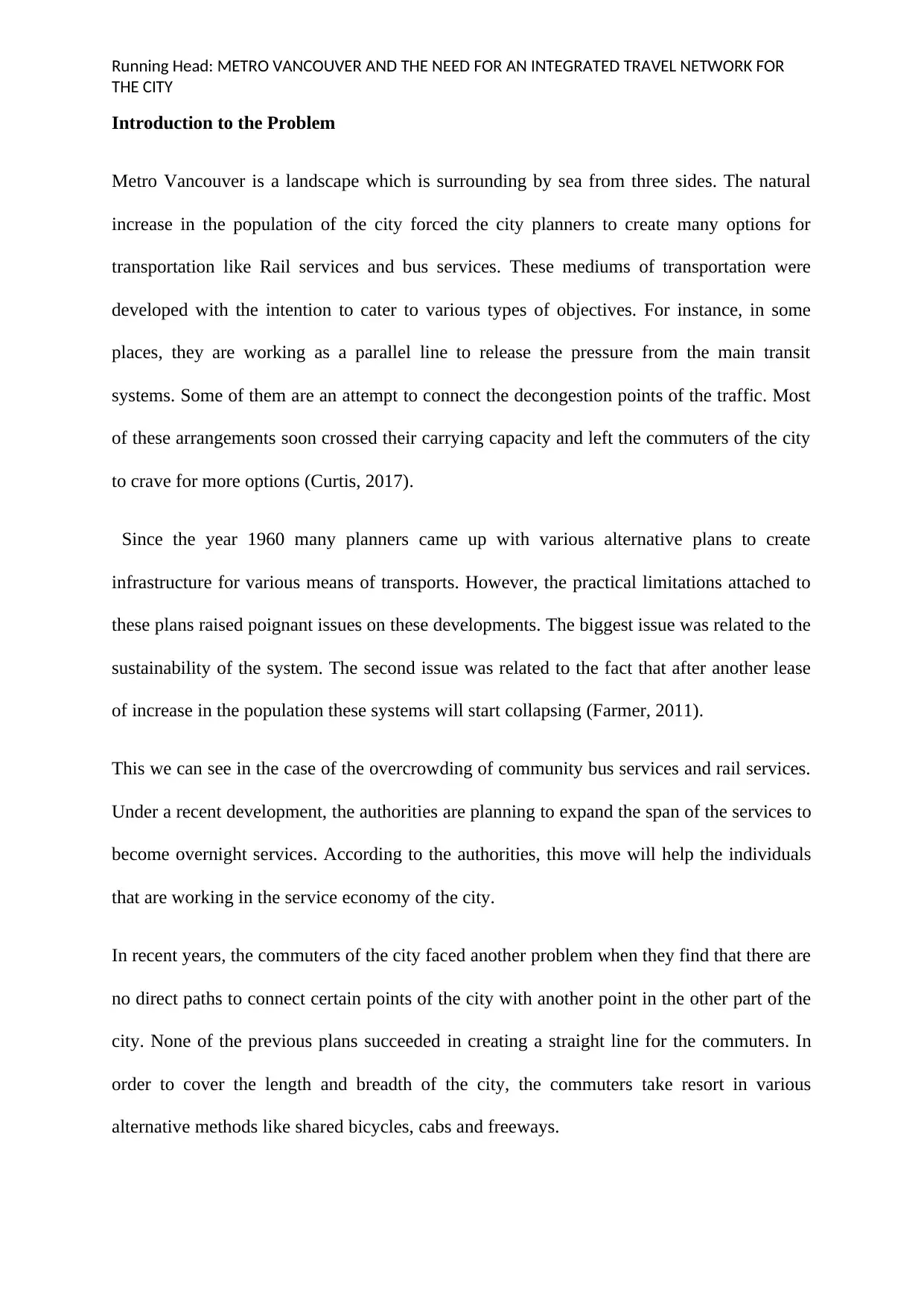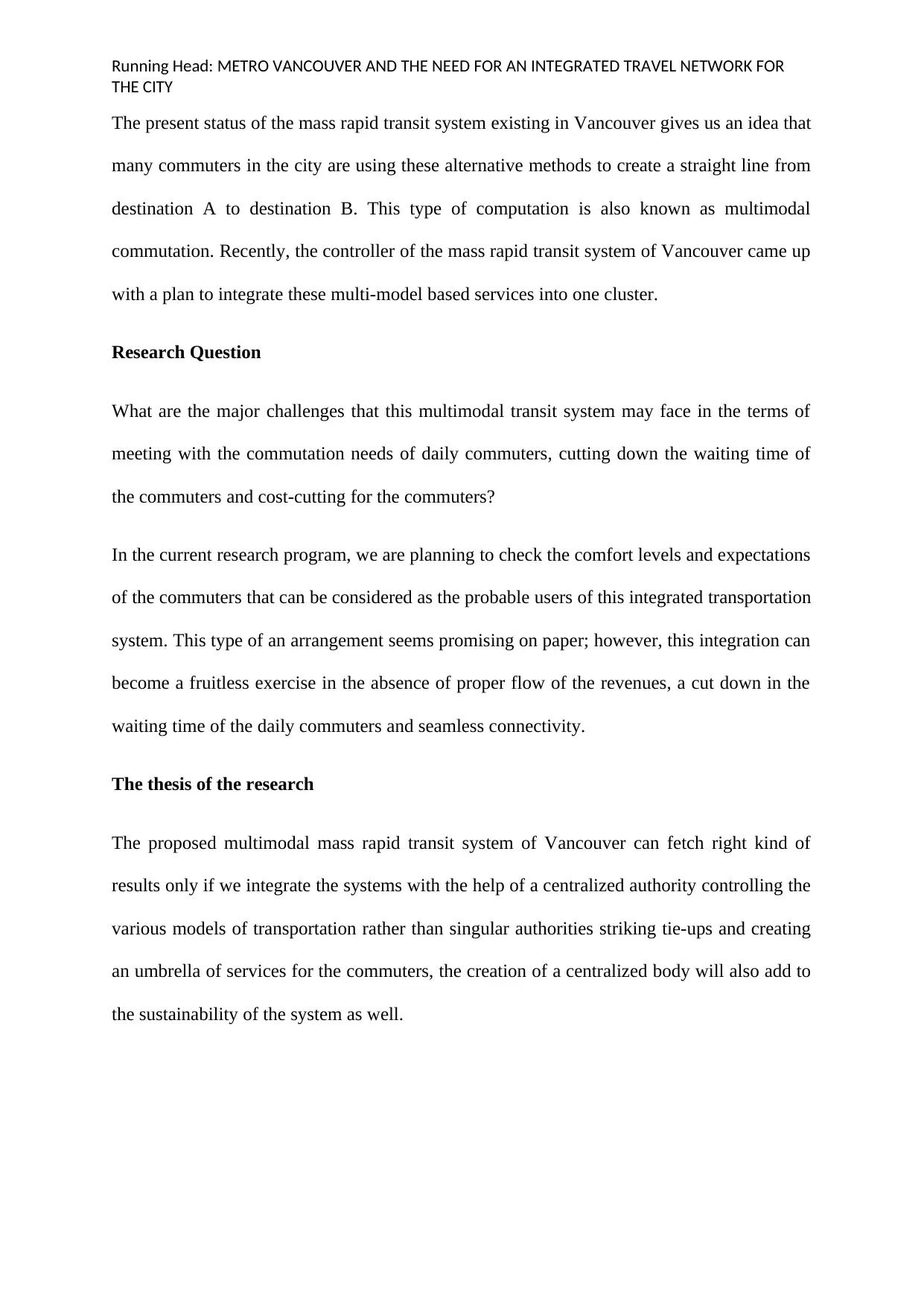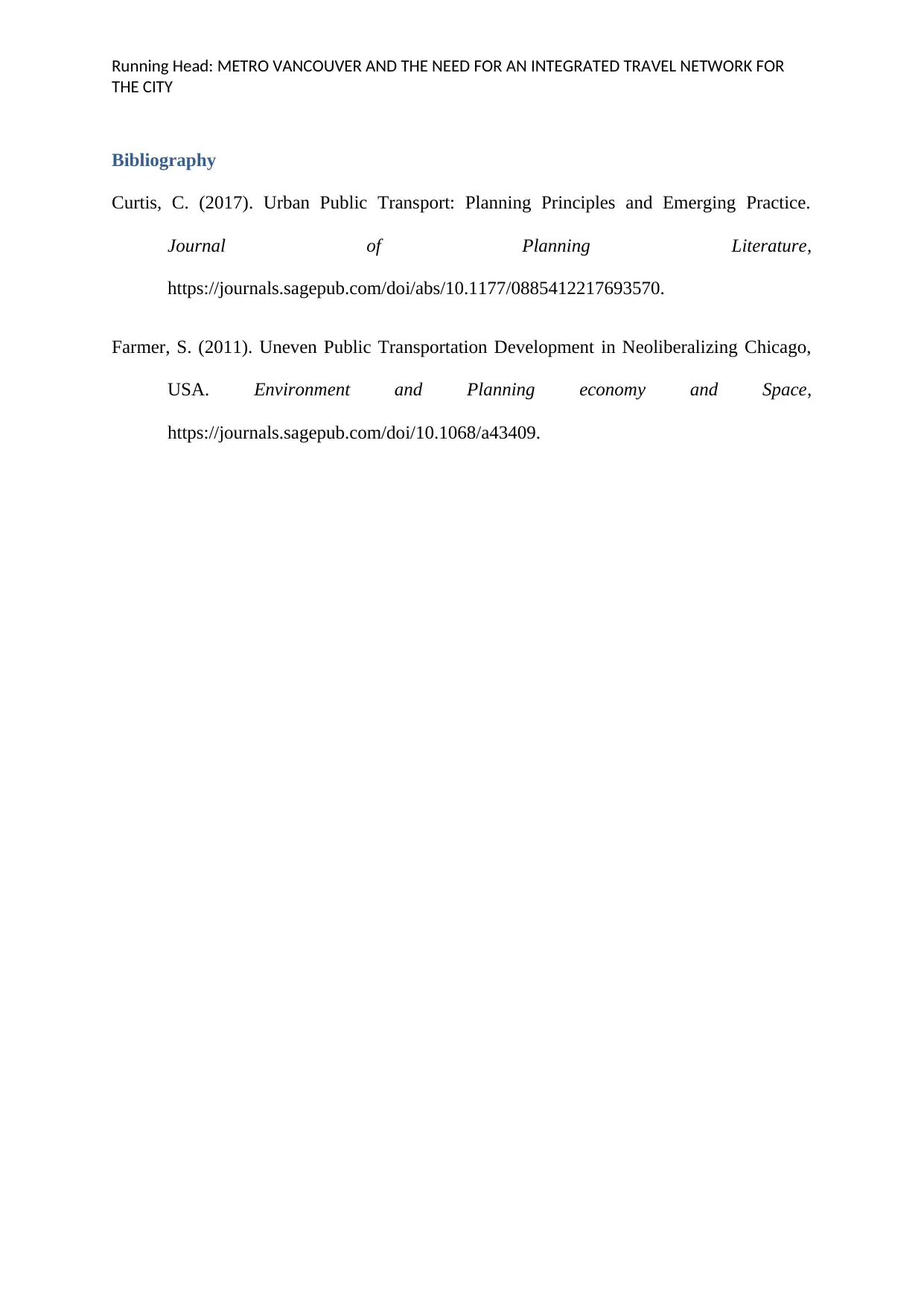GEOG 1150 Project: Challenges of Metro Vancouver Transit Integration
VerifiedAdded on 2022/11/28
|4
|687
|469
Project
AI Summary
This project examines the challenges faced by Metro Vancouver in integrating its multimodal transit system. The introduction highlights the city's reliance on various transport options like rail and bus services, driven by population growth. The paper identifies the limitations of existing systems, including sustainability concerns and overcrowding, and discusses the plan to integrate these services under a centralized authority. The research question focuses on the challenges of meeting commuter needs, reducing waiting times, and cost-cutting within this integrated system. The thesis proposes that a centralized authority is crucial for the success and sustainability of the proposed multimodal system. The assignment includes an introduction to the problem, a research question, and a thesis statement, supported by cited sources.
1 out of 4











![[object Object]](/_next/static/media/star-bottom.7253800d.svg)